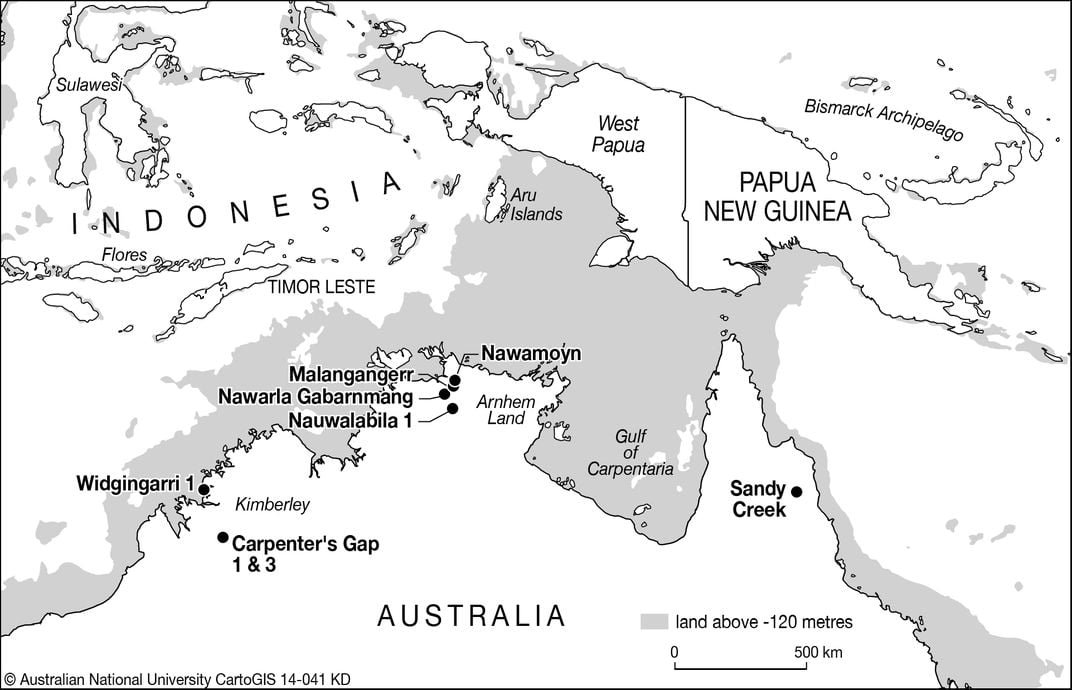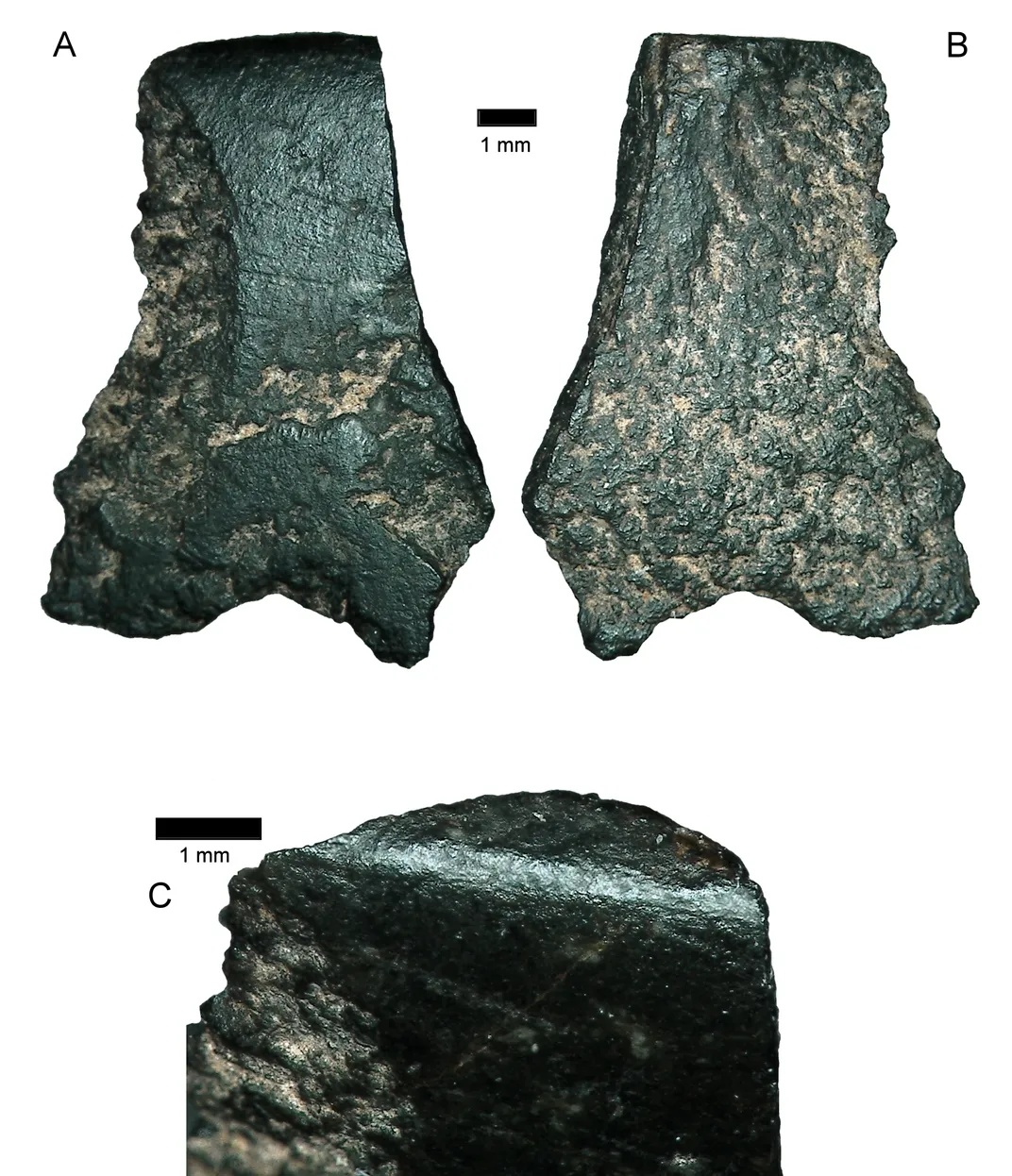50,000-Year-Old Axe Shows Australians Were at The Cutting Edge of Technology
A polished stone chip is the earliest-known example of a ground-edge axe yet
/https://tf-cmsv2-smithsonianmag-media.s3.amazonaws.com/filer/44/a9/44a9b2e3-3968-4cfa-9529-867e60b99b3e/example_of_complete_axe_head_1.jpg)
Nearly 50,000 years ago, the Aboriginal inhabitants of Australia were ahead of the game. At a time when humans around the world were likely relying on stone axes chipped to a sharp edge, a process called knapping, early Australians were refining their edges by grinding against another stone.
Archaeologists found a fragment of an axe about the size of a thumbnail that dates from between 44,000 and 49,000 years ago, they report in the journal Australian Archaeology. "This is the earliest evidence of a ground-edge axe yet reported in the world," they write.
Previously, the contenders for the oldest ground-edge axe included another fragment found in Australia that dated back to about 35,000 years ago and pieces from inhabitants of the Japanese archipelago from roughly 38,000 years ago. The earliest ground-edge axes from Europe, Africa and West Asia are only about 8,500 years old, reports Bridie Smith for The Sydney Morning Herald.
Sue O'Connor, a professor with the Australian National University in Canberra, uncovered this latest ground-edge axe back in the early 1990s, according to a press release from the University of Sydney. The shard was collected along with other artifacts at Carpenter's Gap 1, a rock shelter in Windjana Gorge National Park, in the Kimberly region of Western Australia. But only recently did researchers get a chance to closely analyze the little chip.

Though the fragment could easily sit on the face of a dime, it's diminutive size doesn't lessen the find, University of Sydney professor Peter Hiscock, who analyzed the find after it was unearthed, tells Michael Slezak at The Guardian. "It's really distinctive—it has both polished surfaces coming together on the chip," he says.
In the paper, the researchers explain that ground-edge axes were often repaired by first flaking off pieces along the edge and then grinding the new surface. The process would have been repeated over the axe's lifetime of use, so finding the discarded chips is much easier than whole axes.

The chip is made of basalt, a type of igneous rock, which tells the researchers that the full axe head would have been very heavy, likely unusable without a handle. But with a handle or haft, the axe could have have helped people craft spears and cut down or take the bark off trees.
Before attaching handles, ancient ancestors used hand axes, the earliest examples of which come from a cache of tools discovered in Kenya and dated back to 1.76 million years ago, reports Ian Sample for The Guardian.
The dating of this latest find coincides with the arrival of humans in northern Australia on rafts or boats from Southeast Asia about 50,000 years ago. And that timing is no coincidence.
"Since there are no known axes in Southeast Asia during the Ice Age, this discovery shows us that when humans arrived in Australia they began to experiment with new technologies, inventing ways to exploit the resources they encountered," Hiscock says in the ANU press release.
In Southeast Asia, people might have used bamboo, which is "sharp and hard and fantastic for tools," he tells The Guardian. In Australia, there is no bamboo, so the travelers' descendants had to get creative.